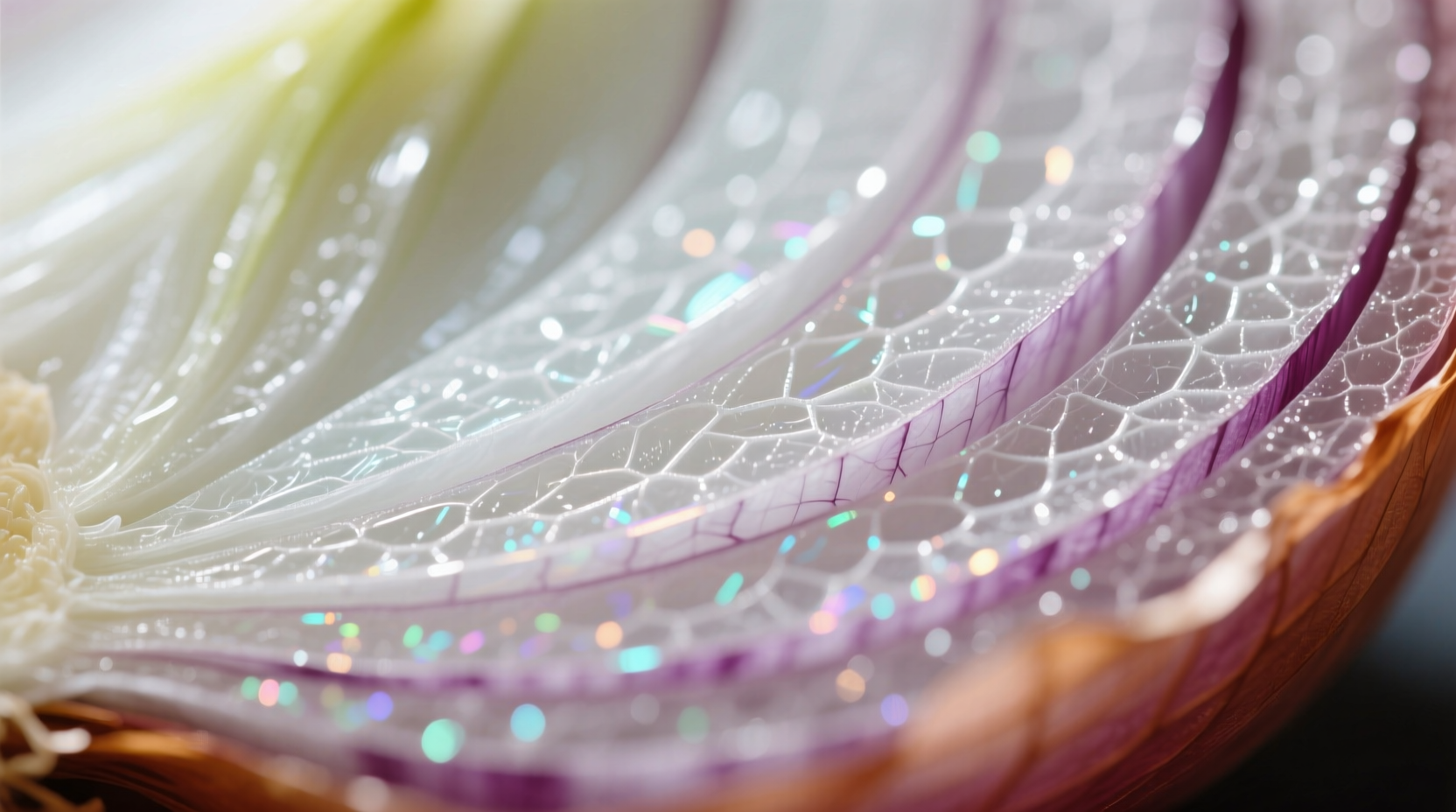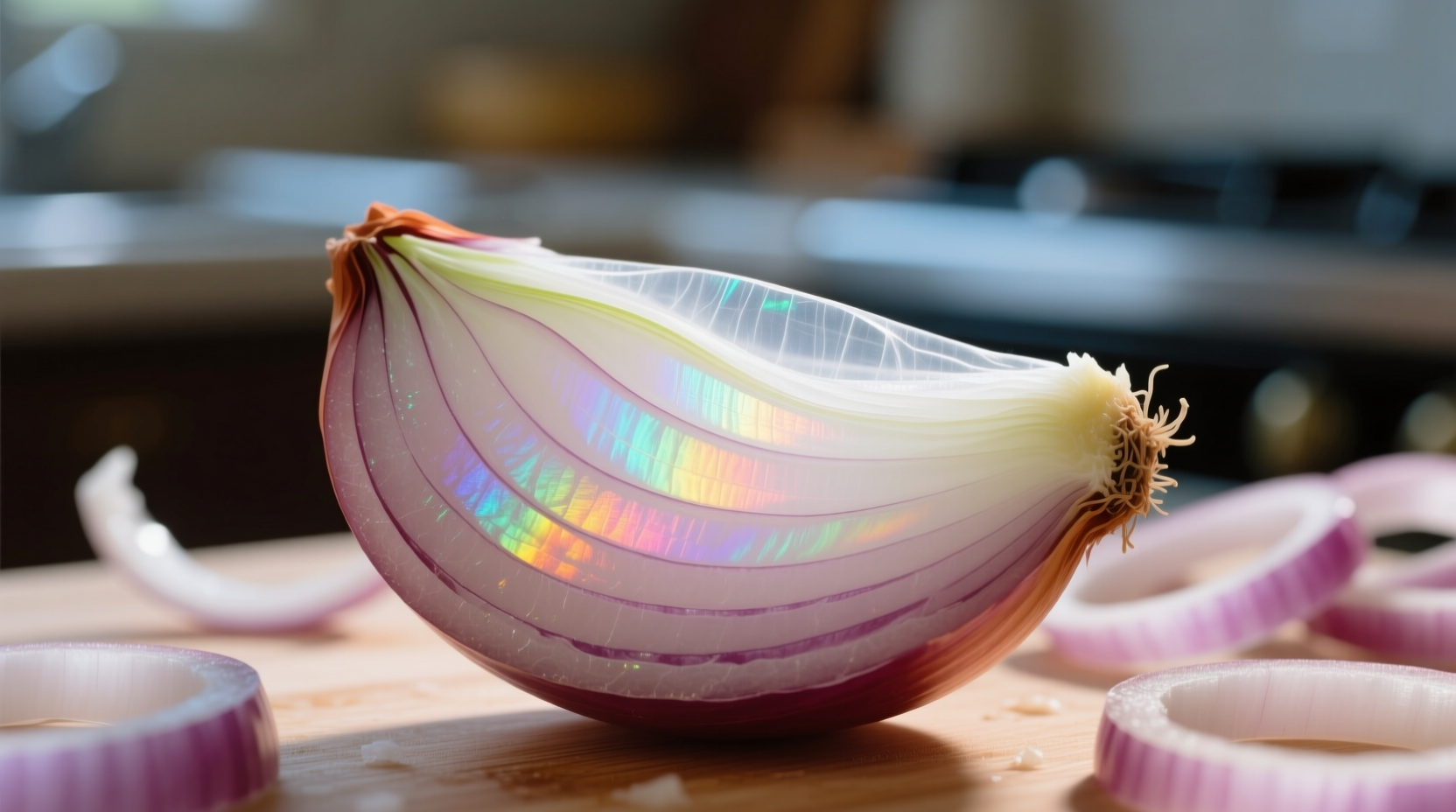Why Onion Skins Matter More Than You Think
Most home cooks immediately discard onion skins without realizing their surprising value. These delicate layers contain quercetin, a powerful antioxidant, and tannins that create beautiful natural dyes. Understanding onion skin composition transforms how you approach food waste and unlocks practical kitchen applications that professional chefs utilize daily.
What Makes Onion Skins Unique: The Science Simplified
Onion skins form through a fascinating biological process. As the onion bulb develops underground, outer layers dehydrate and transform into the papery covering we recognize. This process creates a multi-layered defense system:
| Layer Type | Composition | Primary Function |
|---|---|---|
| Outer Dry Skin | Dead epidermal cells, cellulose | Physical protection, moisture barrier |
| Middle Transition Layer | Partially living cells, quercetin | Antioxidant defense, pathogen resistance |
| Inner Fleshy Layers | Living parenchyma cells, water, sugars | Nutrient storage, growth support |
According to agricultural research from Cornell University's Food Science Department, these layers develop through controlled dehydration that concentrates beneficial compounds while creating the characteristic papery texture (foodscience.cals.cornell.edu).

Practical Applications You Can Use Today
Cooking Enhancements
Professional chefs save onion skins for flavor foundations. The skins contain concentrated flavor compounds that enhance stocks and braises without adding bitterness. Simply add 5-6 skins to your next vegetable stock and remove before serving. This technique works particularly well with yellow onions, which contain higher quercetin levels than white varieties.
Natural Dye Projects
Onion skins produce stunning golden to rust-colored dyes. The USDA's Natural Products Utilization Research unit confirms that yellow onion skins yield the most vibrant results due to their higher pigment concentration (www.ars.usda.gov). For best results:
- Use 1 cup of dried skins per yard of fabric
- Add vinegar as a mordant for colorfastness
- Simmer for 45-60 minutes for deep hues
Composting Benefits
While onion skins take longer to decompose than other vegetable scraps, they contribute valuable carbon to compost piles. The University of Illinois Extension notes that chopping skins accelerates decomposition while maintaining their pest-repelling properties in finished compost (web.extension.illinois.edu).
When Not to Use Onion Skins: Critical Boundaries
Understanding context boundaries prevents kitchen mishaps. Discard onion skins immediately if you notice:
- Mold growth (appears as fuzzy white or green patches)
- Unusual dark spots indicating rot
- Musty odors suggesting bacterial growth
- Excessive moisture that won't dry properly
These conditions indicate the protective barrier has failed, making the skins unsuitable for culinary or craft applications. Always store dried onion skins in airtight containers away from humidity to maintain their integrity.
Mastering Onion Skin Removal
Professional chefs use these three efficient methods:
- The Chill Method: Refrigerate onions for 30 minutes before peeling. Cold temperatures cause the skin to contract away from the flesh.
- The Microwave Trick: Heat whole onions for 15-20 seconds. The steam created separates skin from flesh.
- The Rolling Technique: Place onion on cutting board and press firmly with palm while rolling. Creates separation for easy peeling.
For large batches, commercial kitchens often use specialized onion peelers that remove skins while preserving maximum flesh. Home cooks can replicate this by briefly blanching onions in boiling water for 30 seconds, then transferring to ice water.
Historical Uses Through Modern Times
Onion skins have served practical purposes throughout history:
- Ancient Egypt: Used as natural bandages due to antimicrobial properties
- Medieval Europe: Employed as natural dye for textiles and manuscripts
- Colonial America: Incorporated into folk remedies for wound healing
- Modern Cuisine: Utilized by chefs for flavor enhancement and sustainable cooking
This evolution demonstrates how traditional knowledge continues to inform contemporary culinary practices, with modern science validating many historical applications.
Common Questions About Onion Skins
Are onion skins edible and safe to consume?
Yes, onion skins are technically edible but not typically consumed directly due to their tough, fibrous texture. They're safe for flavoring stocks and broths when removed before serving. Never eat skins showing mold or significant discoloration.
What's the best way to store onion skins for later use?
Dry onion skins completely by air-drying for 24-48 hours, then store in airtight glass containers away from light and moisture. Properly stored skins maintain their properties for up to 6 months. Avoid plastic bags which can trap residual moisture.
Can onion skins really be used as natural dye?
Yes, onion skins produce beautiful golden to rust-colored dyes. Yellow onion skins yield the most vibrant results. For best color, use a mordant like vinegar or alum, and simmer fabrics with skins for 45-60 minutes. The intensity varies based on onion variety and growing conditions.
Do onion skins have nutritional value?
Yes, onion skins contain higher concentrations of quercetin (a powerful antioxidant) than the flesh. They also contain fiber and trace minerals. While not typically eaten directly, these compounds transfer to liquids when used in stocks, providing nutritional benefits indirectly.
Why do some onion skins peel off easily while others stick?
Peeling ease depends on onion variety, freshness, and storage conditions. Freshly harvested onions often have skins that stick more. Refrigeration causes the skin to contract away from the flesh, making peeling easier. Older onions typically have drier, more brittle skins that peel more readily.











 浙公网安备
33010002000092号
浙公网安备
33010002000092号 浙B2-20120091-4
浙B2-20120091-4